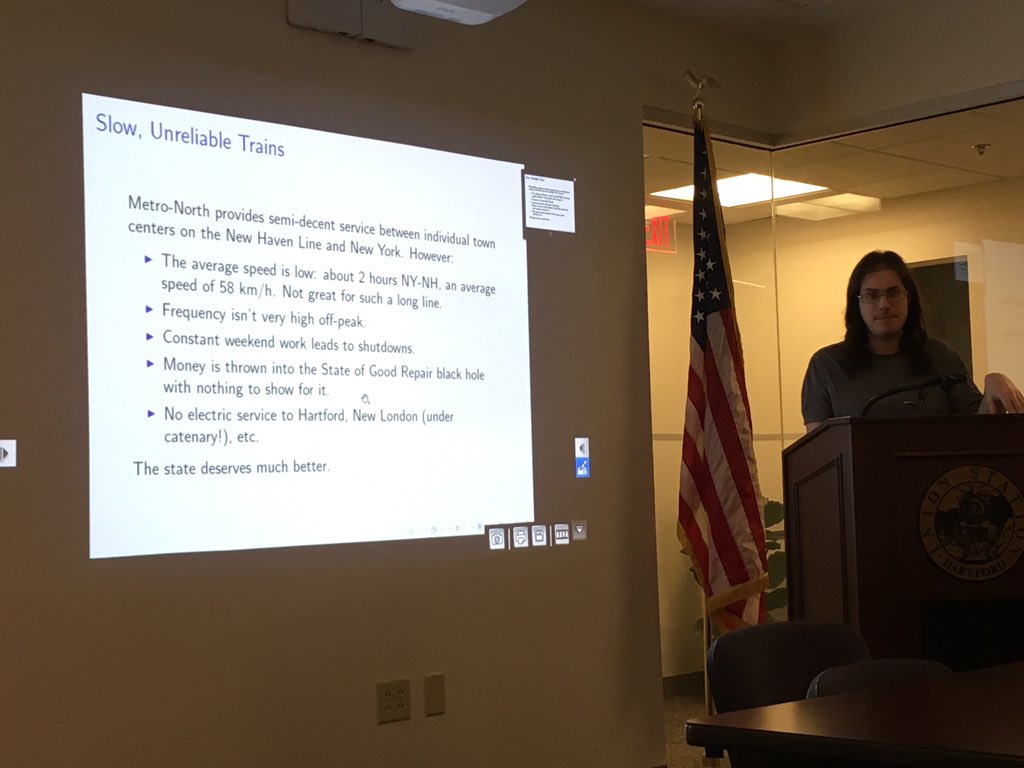. @alon_levy presenting on how to improve Connecticut’s trains in Hartford.
Big problem: trains in CT are based around rich NYC-bound workers. No bus integration, expensive park-and-rides (West Haven P&R bloated station cost to $90m versus 20-30 for Boston)
New Haven Line problems: slow for a basically intercity line (average speed ~35 mph), bad frequency, constant trackwork cutting into frequency, constant SOGR work costing money without creating results
Branches to Hartford and New London use diesel trains (though New London is electrified!). Same issue with MBTA, I would add.
CT and NY infill rail stations (Penn Station Access) have wildly excessive prices. No one, including Alon, knows why.
Though CT economy depends on NYC (and there’s no way to get more trains into NYC), most CT residents work in CT and commute via car.
Nevertheless, fundamental linear geography of CT (Stamford-New Haven-New London and Hartford corridors) favor rail transit even internally.
CT is a rich state; like other rich areas, it can afford the government capacity to have good trains and not be car-dependent (especially if it can get high operating costs lower)
Connecticut is like other European cities with high density and town centers (not grids) arranged in corridors. There are European analogs with high transit use even in small areas: Netherlands, Swiss valleys. What can we learn from them?
Alon brings up how trains and buses in Switzerland are timed to allow <10-minute transfers between intercity and local transport. Buses are not considered transport for the poor like in the US.
Key points for CT: “innovate, don’t imitate”; focus on organization (e.g. cross-honor tickets btw. MNR, CT Transit, Amtrak); target concrete pouring to improve reliability (eliminating junctions, level boarding so wheelchair users don’t cause delays)
Cheap general program of upgrades: better and more frequent schedule, agency coordination, infrastructure upgrades on existing line (which can be substantially automated), bring down infill station costs
Possible to combine this program with service improvements in neighboring states (NYC, Westerly RI, Springfield MA).
Alon’s standard indictment of US tail culture: conservative, fractious, incurious about rest of the world
Alon’s examples: if MNR let Amtrak run at higher speeds, it could save 35-40 minutes on current NY-NH Acela schedule. Also, of course, artificial segregation of Penn Station (you can’t buy LIRR tickets in the Amtrak concourse)

 Read on Twitter
Read on Twitter













